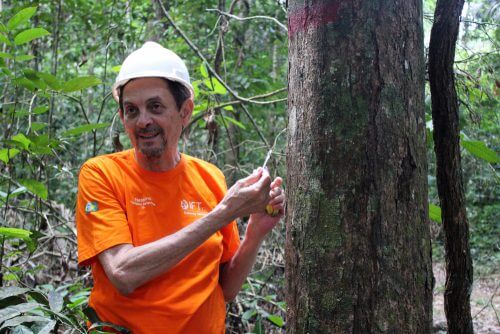According to the report in Science, the developers of a method of listening to the forest (bioacoustics) records the activity that takes place in the forest, the recording and transmission of background noise such as the activity of animals, insects and humans, provides immediate data that enables effective prevention and conservation activities

Law enforcement agencies and conservationists face many different obstacles. In order to preserve nature, it is necessary to have current and immediate information about the beam in the field. When there is a need to protect forests where there is illegal human activity, the need for information is twofold greater.
One of the problems in preserving the forests is the possibility of constant and continuous monitoring of everything that happens in the forest. To this day, conservationists in cooperation with the owners of oil palm plantations have tried to stop relying on satellite images, but in satellite images you see the damage after it has been caused and the damage is already there.
Recently a new method is developing: listening to the forest. According to the report in Science, the developers of a method of listening to the forest (bioacoustics) records the activity taking place in the forest, the recording and transmission of background noise such as the activity of animals, insects and humans, provides immediate data that enables effective prevention and conservation activities.
According to the report published in Science, "the state of the forest can be updated according to the sound map" to distinguish between natural activity and offensive activities, the same can be applied in areas where there are felling concessions, plantations, or hunting areas. In attempts to get immediate information, the nature guards used "trap" cameras, but the hunters or loggers would destroy the cameras and thus prevent an immediate response, with the new method the listening equipment is hidden at a high altitude (30 meters) and thus is invisible. From a satellite it is also impossible to detect the selective felling of individual trees within a large area, and clouds and the smoke of the fires hide what is happening.
According to a body called "Protecting the World's Forests (Global Forest Watch) in 2017 forest areas of the order of three hundred thousand square kilometers were lost to the world. The countries with the greatest loss were Brazil, Brazil, the Republic of Congo, Indonesia, Madagascar and Malaysia.
Let's remember that Broa Erot contributes about 15% of greenhouse gas emissions every year. If in Brazil forests are being cleared to make room for pastures and soybean cultivation, then in Southeast Asia the main reason for clearing is to free up areas where oil palm plantations will be planted.
In recent years, oil palm plantations in Southeast Asia have been under constant investigation. Green activists and consumers cooperate and accuse the plantation owners of seriously damaging the forests. The investigation and cooperation recently led the "watchdog" of the industry to adopt a series of strict guidelines, the main one of which is a ban on turning forest and swamp areas into plantations.
When listening to the forest (Bioacoustics) will be applied by the conservationists and the owners of the plantations, it will be a way to moderate the cutting and stop it completely, thanks to the immediate identification of any threat. Detecting the sound of gunshots or saw engines will direct the guards to the place to stop the attackers. When criminals poachers and loggers know that their activities can be identified immediately, it is hoped that they will be careful and refrain from their offensive activities.
The authors recommend establishing a global organization that will support the method, the production of the (relatively cheap) equipment, and also the collection and distribution of data that will enable the study of natural forest sounds versus offensive noises with the help of artificial intelligence. This data will be used for academic study and research that will enable decisions on conservation policies to be implemented worldwide.
